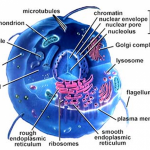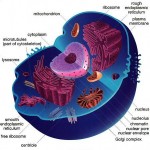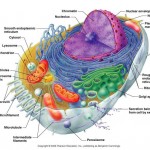You don’t swim in the Venice canals—they’re polluted, they’re filthy. You don’t swim in a water system that is polluted, acidic, that will not allow life to thrive. My point today is that in between your cells are the canals of Venice. There’s the easy-to-understand analogy. In between your cells is a water system, it’s called very logically the intercellular space. We’re going to talk about that space today.
Liver cleanses, gallbladder cleanses, colon cleanses, kidney cleanses–the inside track is to understand that all you’re trying to do when you do these things is to clean the intercellular water.
Your perception of health versus the inside track–that’s the purpose of this show–to get you to a deeper understanding. Nothing in science is difficult for you if it’s taught correctly. My basic contention is that no matter what you do for a living, you have enough brains and enough interest to understand science.
The body is made of cells. I just want you to think of a bunch of grapes. Each grape is a cell. But in between each grape is a space. That’s the intercellular space. Now, put that bunch of grapes into a plastic bag filled with water. That intercellular space is filled with water. If in fact that water begins to get like the canals of Venice–it soaks those cells in filth. And the cell doesn’t like that. Remember, the cell is a living, dynamic organism, and if you pollute the water in between the cells, the cells begin to get angry. And what that means chemically is they inflame.
And why does the water get filthy? It doesn’t drain. Why does it get filthy? The cell excretes. Why does it get filthy? Because the air and the water are filthy when they come into you. There are loads of reasons that the intercellular water gets filthy. Health is clean intercellular space. Health is the space between the cells.
And where you fail is where that dynamic living organism, the cell, starts to get annoyed. And little bits of the membrane of the cell, the skin of the grape, begin to chip off, fall off, inflame off, decay off. And little bits of the guts of the grape, the guts of your cell, the protoplasm, the cytoplasm of the cell start to ooze out.
That guts of the cell begin to squirt into the canal. Now we have a patrol system in the canal. It’s called the immune system. And we have little animals that float around in the immune system, specialized cells that have the job of patrolling those waters. And when they see something that shouldn’t be there, they set off an alarm.
That alarm sends a signal to the entire immune system. That’s the inflammatory response. Now something comes with the inflammatory response, the deposition of fibrin. Fibrin is what you use to make a blood clot. Fibrin slows down the flow of blood. Fibrin is what we call the material through which we develop intercellular scarring.
That works in the interest of the body when in fact, you’ve got some sort of true alarm state. But if you’re chronically inflaming yourself–chronically inflaming yourself in ways that you shouldn’t, in ways that we haven’t evolved to adapt to, well then this chronic inflammatory state where fibrin is constantly deposited all over the body systemically is the ground work to disaster.
Because once the fibrin is laid down, the water doesn’t flow. You have a traffic jam in those canals, you start to clog up the canal. And finally, that canal turns to sludge. The living, dynamic cell is looking at the filth around it and and the cell is saying, what am I going to do? How am I going to function? How am I going to do my job? How am I going to excrete my poisons? How am I going to handle all the poisons that are coming into my house that shouldn’t be? That cell starts to get annoyed and that’s when it goes dysplastic. It begins to change shape. The chemical stress changes the morphology of the cell. The cell adapts. It morphs.
So that symptom, that disease, that diagnosis you got was once just an inflamed cell in filthy intercellular water. It’s just like the water you put in the plastic bag around the grapes, if you allow that water to get filthier and filthier and you don’t drain it out of the bag and put fresh water in, eventually the grapes will change their shape. That’s beautiful. That analogy should do it for you.





